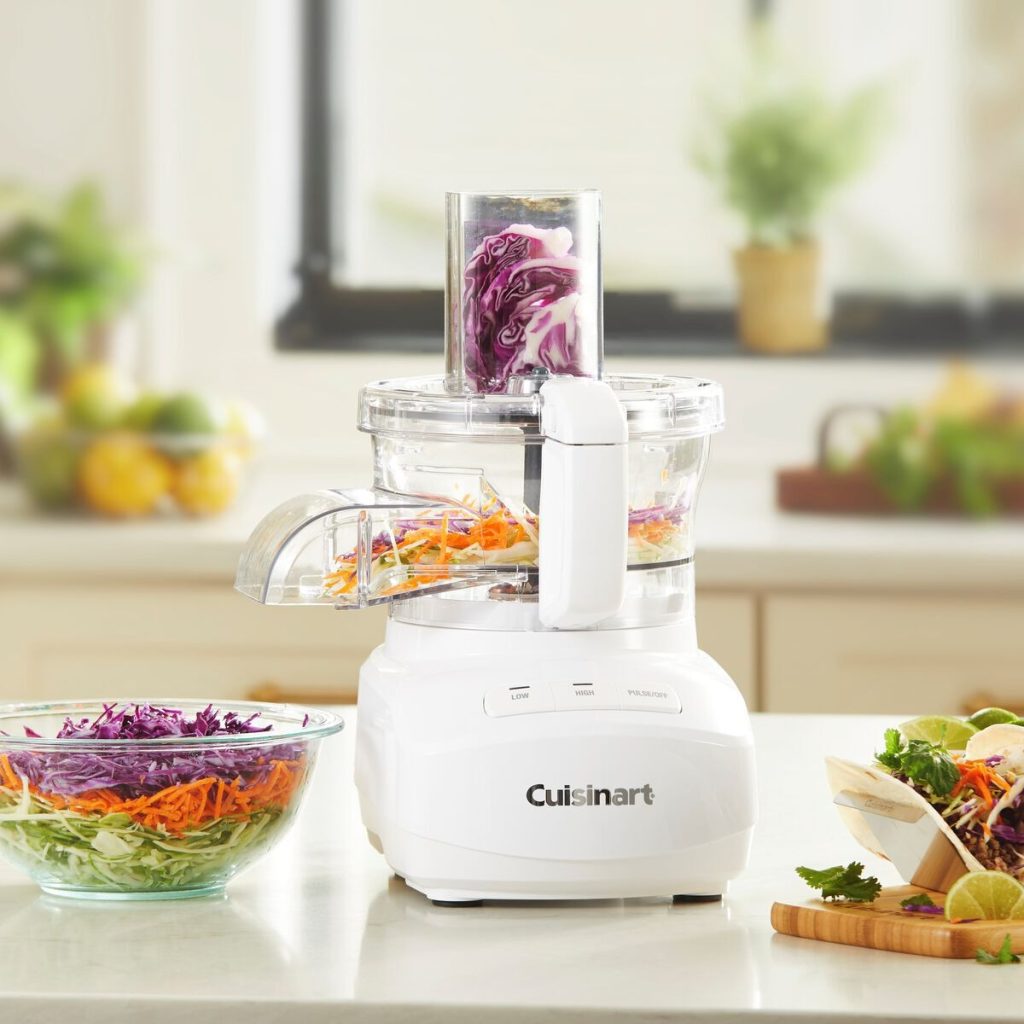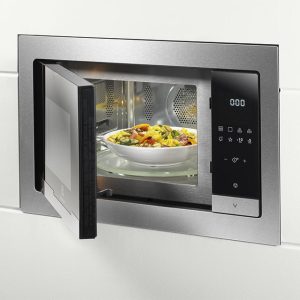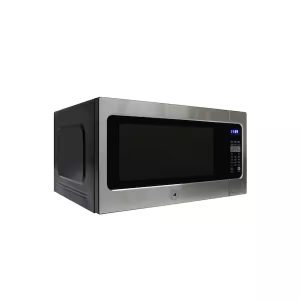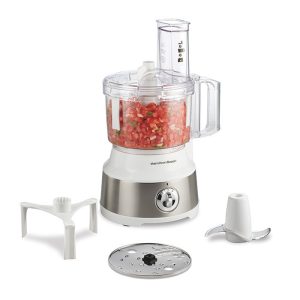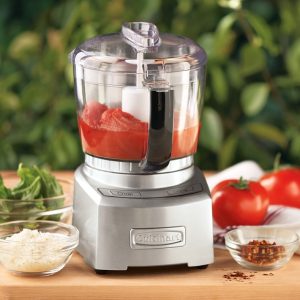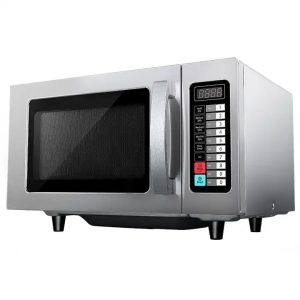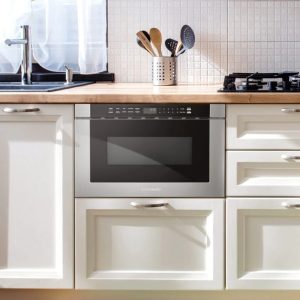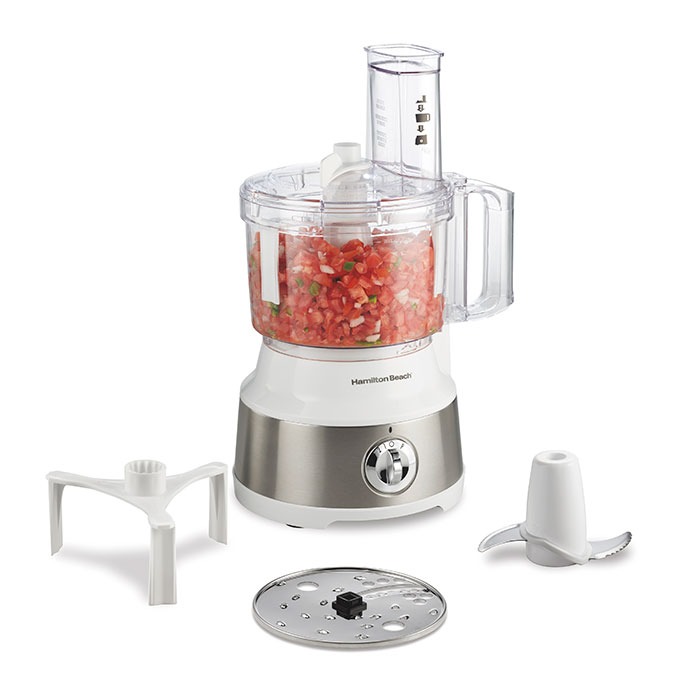
Introduction to Kitchen Appliances
The kitchen is a hub of activity in any home. Here, appliances are the silent helpers that make all kinds of food preparation easier. Two heroes often stand out in the culinary arena: food processor vs stand mixer. These appliances are not just tools but crucial partners for those who love to cook and bake.
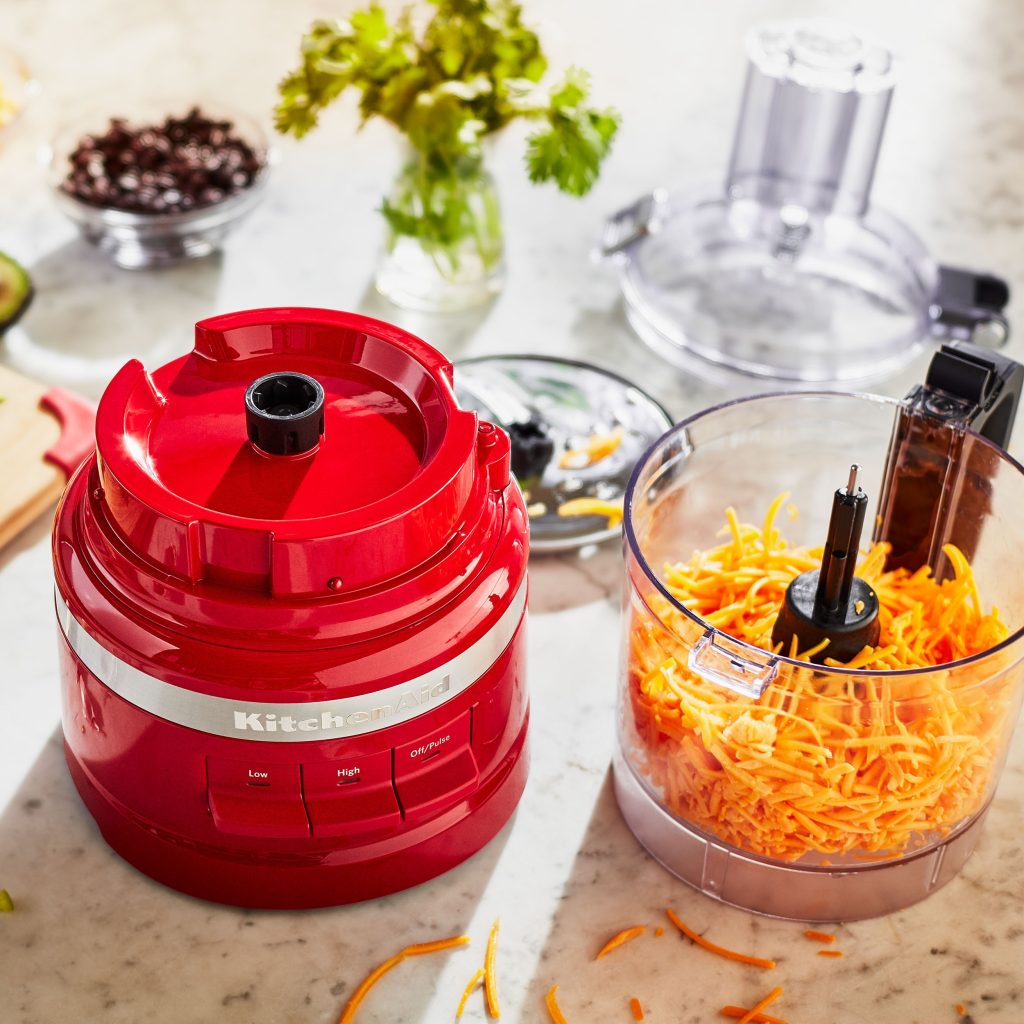
A food processor is the master of chopping, slicing, and dicing. It saves time by performing tasks that would take much longer by hand. With a variety of blades and settings, it can handle a multitude of ingredients, turning tedious prep work into a swift process.
On the other hand, a stand mixer focuses on mixing, whisking, and kneading. It is a boon for bakers, helping them to achieve perfect doughs and batters. A good stand mixer can make light work of tasks that are physically demanding, like kneading bread dough.
Essentials of a Food Processor
When it comes to food processors, think of them as your kitchen’s Swiss Army knife. They excel in tasks that require precision like chopping, mincing, pureeing, and blending. Food processors come with various blades. These blades let you manage different foods easily. If you churn out coleslaws, nut butters or sauces regularly, a food processor could be your best pick.
Key Components
Food processors have a base that houses the motor, a bowl where you place the ingredients, and a lid with a feed tube. To use, you fit the desired blade onto the base. Then you add your ingredients through the feed tube while the appliance is running. The sharp blades do the rest. They chop, dice, or slice at the push of a button. It’s a quick, clean process.
Versatility in Use
The versatility a food processor offers is hard to beat. With the correct attachment, they can knead bread dough, grind meats, and even whip up a quick pastry dough. The speed and efficiency of a food processor can change your kitchen routine. It’s perfect for meal prep and can handle tough tasks with ease.
Time-saving and Effortless
One of the biggest benefits is the time it saves. Imagine cutting down the preparation time for meals significantly. Food processors do it by chopping vegetables and herbs swiftly, a job that by hand is slow and tedious. Plus, with less manual effort, you reduce the strain on your hands and wrists. This makes a food processor ideal for those with limited dexterity or just anyone looking to save time and effort on kitchen tasks.

Advantages of a Stand Mixer
Stand mixers shine in the realm of baking. Their strength lies in tasks such as mixing batters, kneading dough, and whipping creams. Here are a few advantages that make a stand mixer a valuable ally in the kitchen.
Powerful Mixing Action
A stand mixer delivers unmatched power in combining ingredients. Its motor is designed for tough mixing jobs. It works fast to create even mixtures, which is key for baking success.
Hands-Free and Consistent Results
With a stand mixer, you set the speed and let it do its magic. It grants you the freedom to multitask while ensuring consistent results. Every batch of dough or batter comes out just right.
Variety of Attachments
Stand mixers come with different attachments like paddles, whisks, and dough hooks. These let you tackle a wide range of recipes with precision. Whether you’re making bread, cookies, or meringue, you have the right tool for the job.
Saves Physical Effort
Kneading bread by hand can be exhausting. A stand mixer does the hard work, saving you from a strenuous arm workout. It’s a relief for those who bake often or have physical limitations.
Remember, when weighing food processor vs stand mixer, keep in mind your kitchen activities. If baking is your joy, a stand mixer might just be the appliance to uplift your culinary practice.
Key Differences: Food Processor vs Stand Mixer
Understanding the key differences between a food processor and a stand mixer is crucial. Let’s delve into these differences to help inform your decision.
Purpose and Functionality
A food processor is your go-to for chopping, slicing, and shredding. It performs a wide range of prep work efficiently. A stand mixer specializes in mixing and kneading. It’s the choice for baking and making doughs.
Motor and Power
Food processors have motors that work with quick bursts of power for cutting. Stand mixers have powerful, steady motors. They mix and knead for longer periods without overheating.
Capacity and Size
Food processors have a feed tube for adding ingredients while running. They often have smaller bowls than stand mixers. Stand mixers offer large bowls. They handle bigger batches, ideal for bread or cookies.
Attachments and Versatility
With various blades, a food processor can tackle many tasks. Stand mixers shine with attachments like paddles and hooks. Each serves unique baking needs.
Speed and Efficiency
Food processors work fast with multiple speed options. They chop and slice quickly. Stand mixers mix at a set pace, but do so with great consistency.
Cleanup and Storage
Food processors have parts that are often dishwasher safe. This makes cleanup easy. Stand mixers can be bulkier and their attachments may require hand washing.
When considering food processor vs stand mixer, weigh these differences carefully. Your usage and what you cook most will guide your choice.
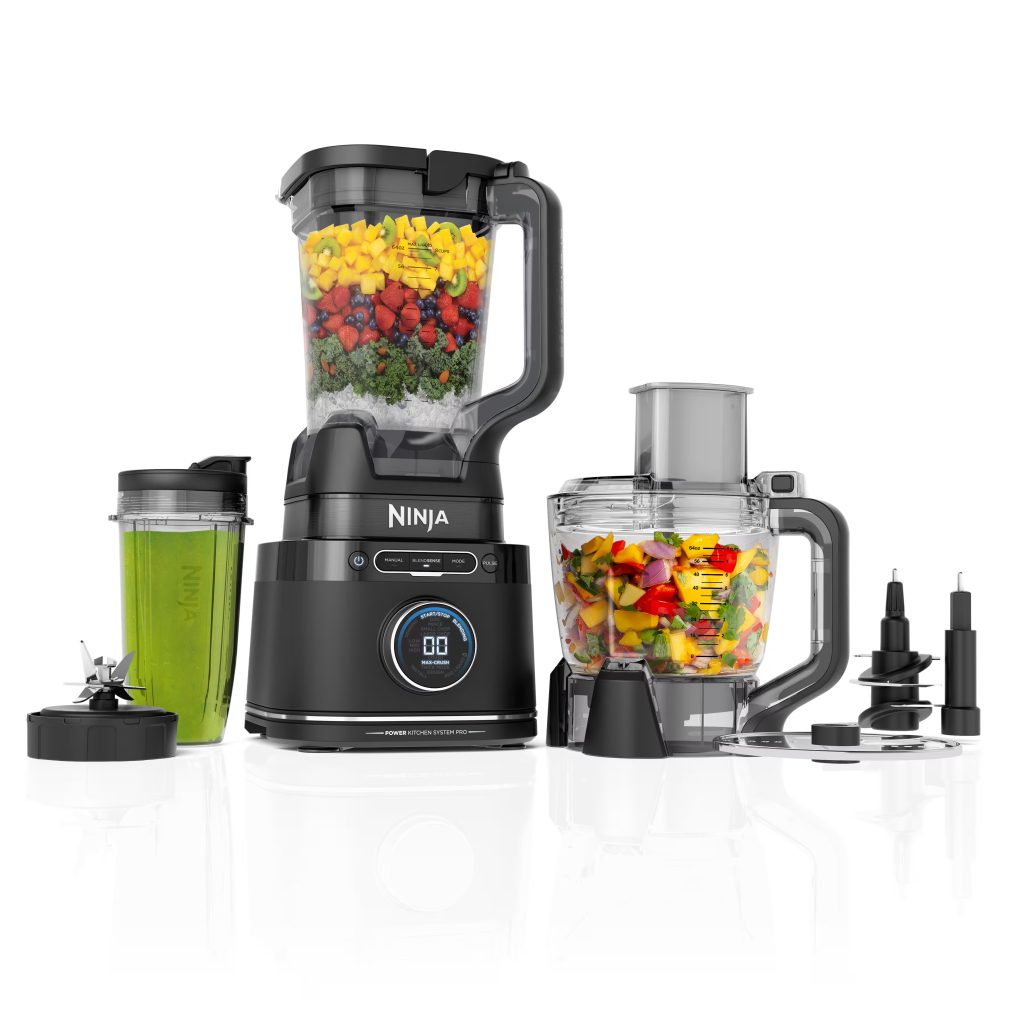
Selecting the Right Appliance for Your Cooking Needs
The choice between a food processor vs stand mixer hinges on your kitchen habits. Consider the types of meals you prepare often. If your dishes lean towards chopping-heavy recipes, a food processor fits the bill. Think salsas, chopped salads, or vegetable prep for soups. A stand mixer will serve you better for baking heavy doughs or mixing cake batters.
Here’s a simple guide to deciding:
- Frequent chopping and slicing: Go for a food processor.
- Baking breads and pastries: Choose a stand mixer.
- Volume of food: Large quantities are easier in stand mixers.
- Counter space: Food processors take less space compared to stand mixers.
- Budget: Consider which appliance fits your finances. Stand mixers can be pricier.
Don’t forget to account for your personal cooking style. Some cooks prefer hands-on methods, while others opt for the convenience of an appliance. Your physical comfort is also key. If kneading and mixing by hand cause strain, a stand mixer is a sound investment.
Understanding Attachments and Accessories
Finding the right attachments for your appliance is crucial. Let’s dive into what you need to know about attachments and accessories for food processors and stand mixers.
For Food Processors
The food processor comes with a selection of blades and discs. These include:
- S blades: For chopping and pureeing.
- Dough blades: To mix and knead dough.
- Slicing discs: To create even slices of vegetables or fruits.
- Grating discs: To shred cheese or veggies.
Some models offer additional accessories like a julienne disc or egg whip. Each serves a specific prep task. Swapping accessories is easy. This makes the food processor handy for various recipes.
For Stand Mixers
Stand mixers have their own set of attachments:
- Paddle attachment: For mixing batters and cookie dough.
- Whisk attachment: To whip eggs or cream.
- Dough hook: For kneading bread or pizza dough.
You can also find extras like a pasta roller or ice cream maker. With the right attachment, a stand mixer can do more than baking tasks.
Accessories extend the versatility of your appliance. They can enhance your cooking and baking abilities. Pick the right attachments, and you’ll get the most out of your food processor or stand mixer.
Maintenance and Care for Longevity
Owning a food processor or stand mixer is an investment in your kitchen’s efficiency. To ensure they last and perform at their best, proper maintenance and care are essential. Here’s how to keep these appliances in top shape.
For food processors, always follow these steps after use:
- Disassemble the appliance, removing the blades and bowl.
- Wash the removable parts with warm, soapy water.
- Hand-dry or air-dry components completely before reassembling.
- Wipe down the motor base with a damp cloth.
- Sharpen blades regularly to maintain their cutting efficiency.
When it comes to stand mixers, adhere to the following:
- After each use, clean the mixing bowl and attachments.
- Hand-wash attachments to prevent damage, unless specified dishwasher-safe.
- Wipe the stand and motor head with a soft, damp cloth.
- Oil the hinge points occasionally if the head moves up and down.
- Store your mixer with care to avoid dents or scratches.
Both appliances require you to:
- Check for wear and tear on cords and plugs.
- Store in a dry location to prevent rust or electrical issues.
- Avoid overloading the machine to prevent motor burnout.
- Consult the user manual for specific maintenance guidelines.
With these simple care routines, your food processor or stand mixer will be reliable partners in your culinary adventures for years to come. By paying attention to maintenance, you protect your investment and ensure your kitchen remains a place of creativity and enjoyment.
Conclusion:
In the battle of food processor vs stand mixer, your cooking habits take the lead. Each appliance has strengths that cater to different tasks in the kitchen. The food processor is a master at chopping and slicing quickly, while the stand mixer excels at mixing and kneading dough with ease.
